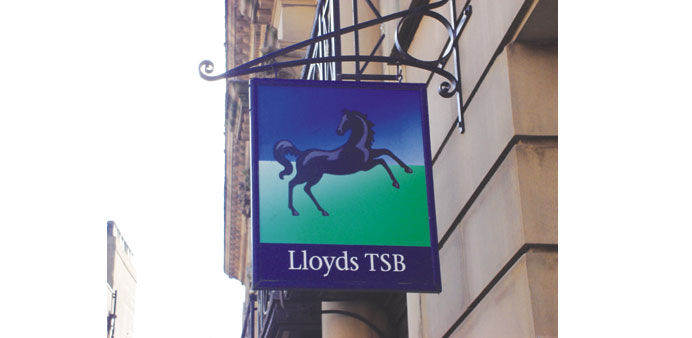The scale of the Lloyds sale means banks involved should land tens of millions of pounds.
Reuters/London
More than a dozen top banks are finalising plans to run a £20bn ($30bn) share sale in part-nationalised Lloyds, one of the most prestigious British deals in recent years, but with fees cut to the bone.
Banks need to pitch by Monday to handle the sale of the government’s 39% shareholding in Lloyds and - later - its 81% of Royal Bank of Scotland (RBS), UK Financial Investments (UKFI), which manages the government’s shares, says.
UKFI will pick a shortlist, possibly about eight banks, which it can turn to at short notice, and a Lloyds sale may start this year with as much as £5bn worth its holding up for sale, industry and political sources say.
Bankers said all the big names from Wall Street and the City of London will be bidding, even though fees for government work are far less lucrative than for private firms.
“There’s more honour at stake than there is money,” said one senior investment banker involved in the process.
Bidding for the work will bring some of the City’s big names up against each other: UBS’s Simon Lyons and David Soanes, both of whom are advising Co-op Bank on its £1.5bn ($2.3bn) rescue plan, Credit Suisse’s Ewen Stevenson and Sebastian Grigg, a contemporary at Oxford University of Osborne and British Prime Minister David Cameron, Barclays’s Jim Renwick - who advised RBS on its bailout, and Rupert Hume-Kendall, one of the most prolific dealmakers at Bank of America Merrill Lynch, who last year advised on a Reckitt Benckiser share sale.
Heavyweights such as HSBC CEO Stuart Gulliver, Deutsche Bank’s Anshu Jain and UBS’s Sergio Ermotti may also enter the fray.
Fees could be below the usual 0.5% for a government sale and maybe as low as 0.1%-0.2% if the government opts to give the banks advisory roles rather than the more risky taking on of blocks of stock to sell on, bankers said.
Finance Minister George Osborne said in June that the government was ready to start selling its Lloyds shares, which are trading comfortably above the government’s breakeven price, having hit a two-year high in June.
The Treasury has not yet said how it will structure the sales. It may ask a syndicate of banks to buy a block of shares and sell them in a traditional accelerated bookbuild process, which requires the banks to take on more risk.
Alternatively, it may ask banks to play more of a marketing role and run a roadshow to assess demand for shares, without taking any risk. That would enable the Treasury to pay lower fees and vary the amount it sells depending on demand. The US government used this method to exit insurer AIG, on which it made a $22.7bn profit after paying underwriting fees of 0.5%, far below usual non-state fees of 2-3%.
The scale of the Lloyds sale means banks involved should still land tens of millions of pounds: banks would earn £25mn if they charged 0.5% on the sale of £5bn of shares. That is potentially £325mn ($490mn) in total fees - albeit maybe over a decade.
But the real prize is the prospect of follow-on work for a job well done. Britain pumped £20bn into Lloyds and £45bn into RBS, and said it aims to get its money back.



